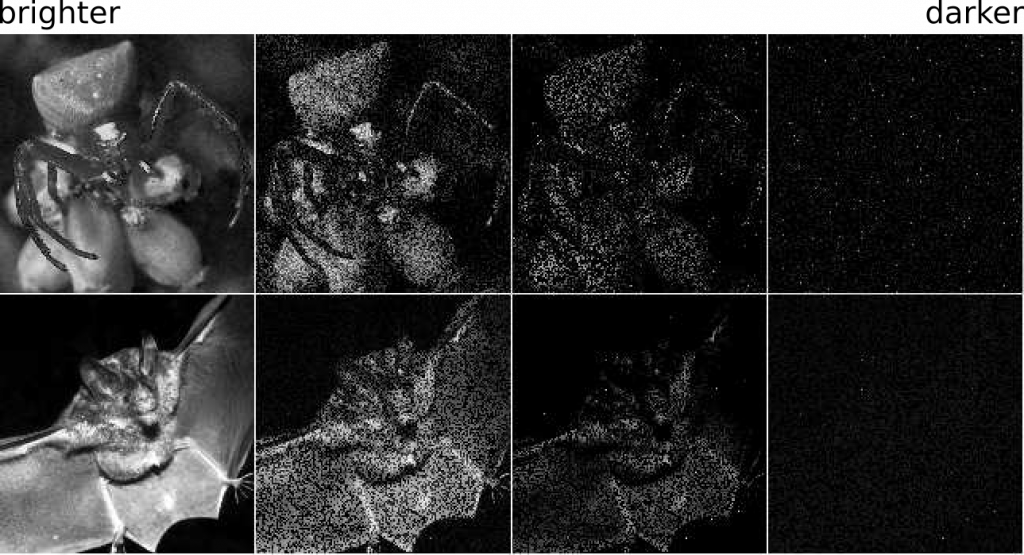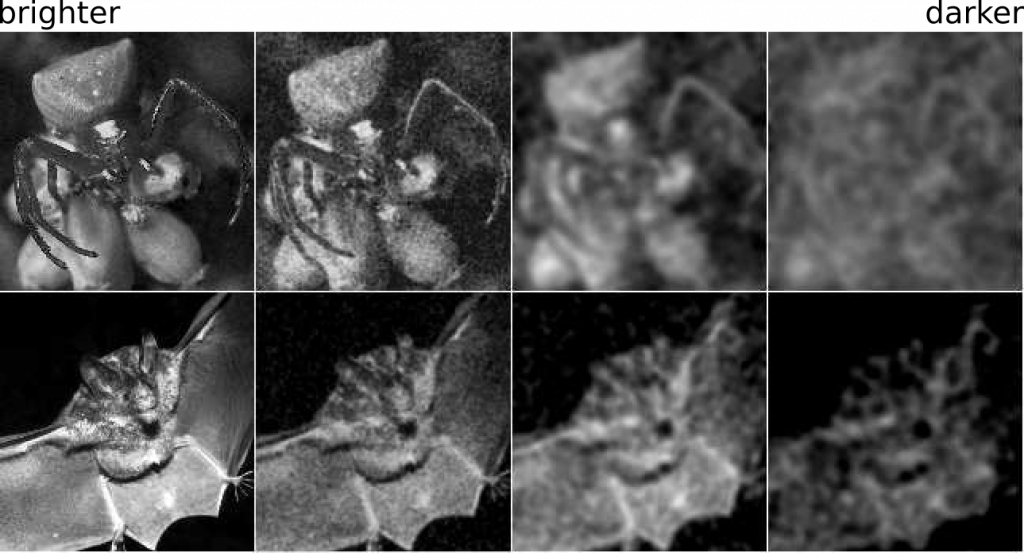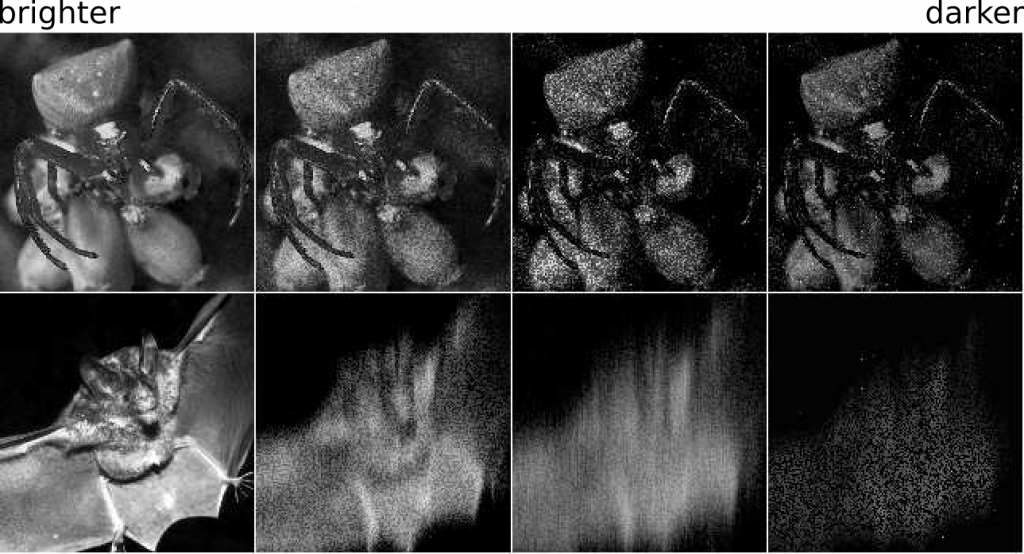Visual summation for dark and fast scenes
Images from cameras, telescopes, or just your eyes all suffer when light is dim because photons, which actually make the images, are scarce. Photons are absorbed discretely and randomly, so in the dark you get an increasingly unreliable image. These images show two animals that might be concerning to a foraging insect, a spider, camouflaged on a flower, and a bat, patrolling in the air. As light gets dimmer (left to right), both images are lost (underexposed).

The best way for an animal to improve the underexposure associated with photon count is to gather more photons. Bigger lenses are the ideal solution, which is why photographers in dark areas or at fast sporting events haul around large, heavy lenses (sometimes called “fast” lenses, for photographing quick events). But it becomes impractical to carry ever larger optics. An alternative strategy, summation, gathers more photons by broadening image parameters, sacrificing some visual sharpness (acuity) for increased reliability. Spatial summation increases the solid angle of photon collection, the strategy of our rod cells, which form images for us in the dark. Although they are tiny, they pool in groups to form blurry but highly sensitive images. They give us the ability to see a book in the dark, but without the resolution to read it.

Temporal summation increases light catch with long integration times, essentially waiting longer before forming each pixel in an image. Rod cells respond slowly, allowing us to see dim lights, but leaving us unable to distinguish a flickering light from a steady one. These principles are the same for photography. A large lens is an expensive optical solution to capturing dim or moving images, but a poor photographer can choose faster film—the large granules producing a blurry image—or slower shutter speed—which takes longer and blurs anything in motion.

